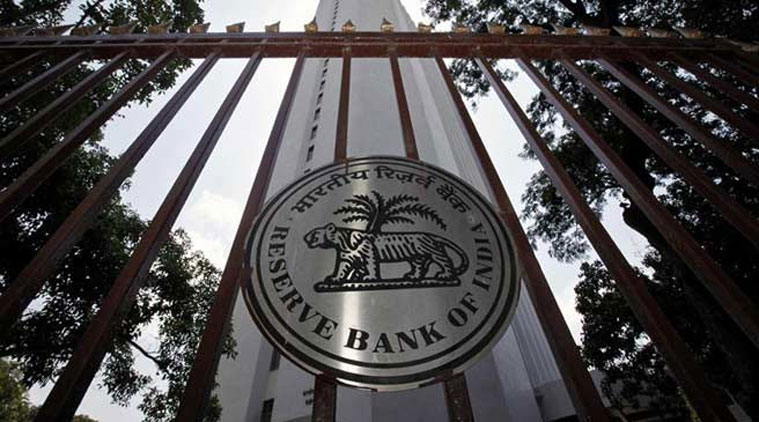Opinion Break the caucus
There is no halfway house to tackling problem of bad loans in public-sector banks.

 Both the RBI and the finance ministry have flagged the dangers of high debt-equity ratios and over-leveraging by Indian corporates. (Source: Express Archive)
Both the RBI and the finance ministry have flagged the dangers of high debt-equity ratios and over-leveraging by Indian corporates. (Source: Express Archive)
When the first NDA government assumed power nearly 17 years ago, one of the biggest economic challenges it faced was soaring bad loans, especially for state-owned banks.
That was partly the result of the investment boom of the mid-1990s, when Indian corporates, enthused by the first flush of liberalisation, went on a borrowing spree. They took loans from all-too-willing public sector banks (PSBs), even at an average interest rate of 17 per cent, to build new factories.
The party, however, ended when the East Asian currency crisis of 1997-98 resulted in a global recession. The Reserve Bank of India was forced to raise interest rates in a rearguard action to defend the rupee. The combination of weak external demand and high interest rates led to large-scale corporate defaults.
The PSBs were the ones left holding the bag — their non-performing assets (NPAs) peaked at 14 per cent of their gross advances in 1999-2000.
But after the deepening slowdown and inflationary threats receded, the RBI cut interest rates sharply, which resulted in banks booking treasury profits on their government security holdings.
The economic recovery from around 2003, coinciding with the worldwide trend, helped things further. By 2005-06, the NPAs of PSBs had fallen to below 4 per cent. The problem had apparently solved itself.
Unfortunately though, in the process, the inherent weaknesses of the public sector-led Indian banking system were glossed over.
As finance minister, Yashwant Sinha had, to be fair, realised these shortcomings. It was that realisation which prompted him to pilot a law to lower government holdings in state-owned banks to 33 per cent. The primary motivation was to allow these banks greater functional autonomy.
Reduced government stakes would have reduced political interference in lending decisions, while forcing more management accountability.
But as was to be expected, India’s lawmakers resisted the proposal and the bill was jettisoned. The same story was repeated when the UPA came to power. It, too, promised more autonomy for and professionalisation of PSB managements, only to leave behind a fresh banking crisis a decade later.
The reasons were virtually the same — a borrowing binge aided by willing banks, whose lending decisions were largely based on political, rather than commercial, considerations. Again, the party lasted so long as external economic conditions were favourable.
The Narendra Modi-led NDA faces an unenviable challenge today. The gross NPAs of PSBs, together with so-called standard loans that have been restructured, are estimated to have touched 12.9 per cent of their total advances as of September 2014.
Both the RBI and the finance ministry (in its recent mid-year economic review) have flagged the dangers of high debt-equity ratios and over-leveraging by Indian corporates. But that is only one side. No less serious is the poor governance standards and practices of state-owned banks — a rot extending right up to the board level.
This crisis springs from an ecosystem in which bank board members are practically political nominees, cutting deals with promoters and businessmen.
Unfortunately, the current NPA problem isn’t going to resolve itself, unlike in 2002-03. For one, it will be quite a while before interest rates slide sharply. The RBI seems in no hurry for that, which means there will be no near-term treasury gains to help lenders cushion their bad loans.
Also, the economy isn’t going to revive in the immediate future. The Modi government, to that extent, will not be able to run away from implementing the much-delayed structural and managerial reforms in PSBs. But does it have the inclination, let alone the political will, for that?
What will help, though, is a tailwind in the form of a rising level and quality of public debate, kicked off by RBI Governor Raghuram Rajan, on the need to keep out defaulters and promoters who stay in control despite running down their companies and bleeding banks.
The government, dominant owner of close to 30 banks, has shown early signs that it recognises some of these challenges. This is reflected in the change in the selection process for bank chiefs and the recent decision to split the post of chairman and managing director in PSBs — a governance practice adopted by private banks long ago.
Welcome as it may sound, there is danger of political and bureaucratic capture here, too. The splitting of the positions of chairman and managing director may have been designed to keep in check bank chiefs who run their organisations and control boards like their fiefdoms. But if an incompetent part-time or non-executive chairman, or one with political links, comes on board, the consequences could be terrible.
And if these non-executive chairmen of state-owned banks are also deemed to be public servants, bringing them under the ambit of agencies such as the CBI, the move could backfire. Far more fundamental to governance reform is revamping the board structure.
The government (the owner) should induct people known for their competence, professionalism and integrity, and the appropriate incentives as well as accountability mechanisms should be put in place. It is only such quality boards that could, in turn, choose the right professionals to run banks built on public funds and enhance the return on capital for the government.
This will happen only if and when India’s banking laws, designed for the socialist era, are rewritten to ensure that state-owned banks are incorporated as companies. The country’s banking laws override other legislation such as the Companies Act, for instance, leading to a flawed system.
As the government contemplates changes and looks towards greater profitability, it will also have to address a key issue: using these banks to deliver on social-sector schemes and widen access to formal credit in a country where the numbers of the unbanked are so stark.
It is not government ownership, per se, that is a drag — this is proved by the cases of some state-owned banks in Indonesia, whose disclosure and other corporate-governance practices came as a big surprise to a few Indians who engaged with the lender. Way back in 1997, after the government pumped in Rs 1,750 crore, a substantial amount even in these times, to help revive Indian Bank, a committee had warned of the dangers of gradualism and a half-way-house approach to tackling weaknesses in the Indian banking system.
In the run up to his victory, Modi told a magazine that he would break the caucus in Delhi once his party came to power. It is that political will to put an end to rent seeking that is on test.
shaji.vikraman@expressindia.com





